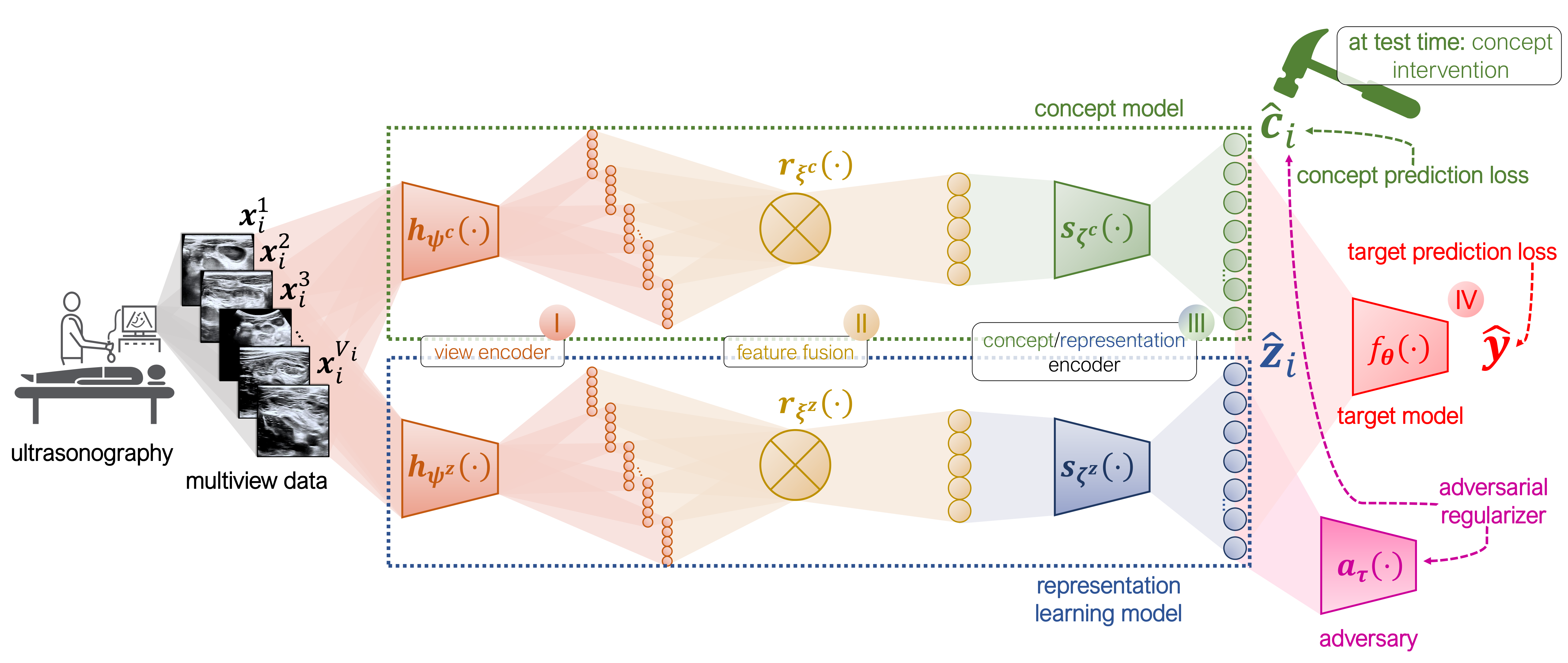Interpretable and intervenable ultrasonography-based machine learning models for pediatric appendicitis
Appendicitis is among the most frequent reasons for pediatric abdominal surgeries. Previous decision support systems for appendicitis have focused on clinical, laboratory, scoring, and computed tomography data and have ignored abdominal ultrasound, despite its noninvasive nature and widespread availability. In this work, we present interpretable machine learning models for predicting the diagnosis, management and severity of suspected appendicitis using ultrasound images. Our approach utilizes concept bottleneck models (CBM) that facilitate interpretation and interaction with high-level concepts understandable to clinicians. Furthermore, we extend CBMs to prediction problems with multiple views and incomplete concept sets. Our models were trained on a dataset comprising 579 pediatric patients with 1709 ultrasound images accompanied by clinical and laboratory data. Results show that our proposed method enables clinicians to utilize a human-understandable and intervenable predictive model without compromising performance or requiring time-consuming image annotation when deployed. For predicting the diagnosis, the extended multiview CBM attained an AUROC of 0.80 and an AUPR of 0.92, performing comparably to similar black-box neural networks trained and tested on the same dataset.
PDF Abstract



 AwA2
AwA2